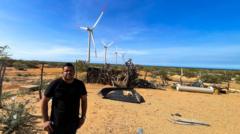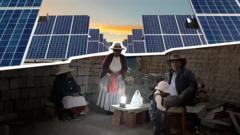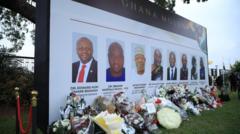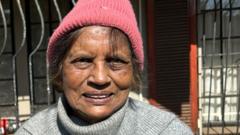In La Guajira, Colombia, the Wayuu indigenous group faces challenges amid the rise of wind energy projects. While the wind farms promise development and cleaner energy, they also threaten cultural traditions and community unity, raising concerns about the socio-economic impact.
Colombia's Wind Energy Revolution: Progress or Precarity for the Wayuu People?

Colombia's Wind Energy Revolution: Progress or Precarity for the Wayuu People?
As Colombia pivots to renewable energy, the Wayuu community grapples with both the advantages and disruptions of local wind farms.
When José Luis Iguarán gazes out from his home in La Guajira, he is met with the sight of ten imposing wind turbines punctuating the horizon. This northern Colombian region, known for its arid landscapes and strong winds, has become a focal point in the country's transition from fossil fuels to renewable energy. Yet, for the Wayuu indigenous community, to which Mr. Iguarán belongs, this shift brings mixed blessings.
For centuries, the Wayuu have thrived in this rugged terrain, engaging in traditional practices like goat herding, agriculture, salt mining, and fishing. However, the burgeoning wind energy sector—headlined by the Guajira 1 wind farm—disrupts their landscape and alters daily life. "You wake up, and instead of trees, you see and hear turbines," expresses Mr. Iguarán, who notes that the nighttime noise from the turbines interrupts sacred dreams critical to their cultural identity.
Despite the environmental benefits of wind energy, Mr. Iguarán acknowledges that Guajira 1 has delivered tangible improvements to his community, such as access to clean drinking water and enhanced infrastructure—contributions financed by the Colombian energy company Isagen, partially owned by Canada’s Brookfield. While some Wayuu see potential in these projects for socioeconomic advancement, others voice skepticism.
Around the same time, Aaron Laguna, a Wayuu fisherman from nearby Cabo de la Vela, highlights the fractures within the community over the wind farms. He points to disputes regarding compensation, transparency, and the protection of cultural norms. "Bad negotiations lead to resources that aren't well-managed by locals," he states, reflecting a larger sentiment of discontent among some Wayuu who feel sidelined from negotiations that could potentially uplift their situation.
Joanna Barney, a director at the Instituto de Investigación y Desarrollo en Paz (Indepaz), warns of the superficial view that renewable energy projects are inherently positive. In Colombia’s context, a lack of robust legal frameworks exacerbates the socio-economic impacts on indigenous communities. The failure of Spanish company EDP Renováveis to advance their wind farms in La Guajira exemplifies local resistance, where community voices are often drowned out by corporate interests.
With key players like AES Colombia venturing into the wind energy space, promises of open dialogues and fair compensation highlight ongoing complexities. Yet, the deeper disconnect between the companies and the Wayuu’s understanding of the wind as an ancestral spirit contrasts sharply with corporate and governmental views of wind as merely a resource.
As La Guajira's push for clean energy gains momentum, the Wayuu remain concerned about the implications on their cultural and ecological landscape. Beyond the allure of development, there lingers a poignant paradox: while the wind farm's electricity is intended for broader distribution, the local communities may continue to live in energy deprivation—using generators while they watch the winds abound around them. The quest for clean energy carries a weight that the Wayuu community will have to navigate carefully.



















